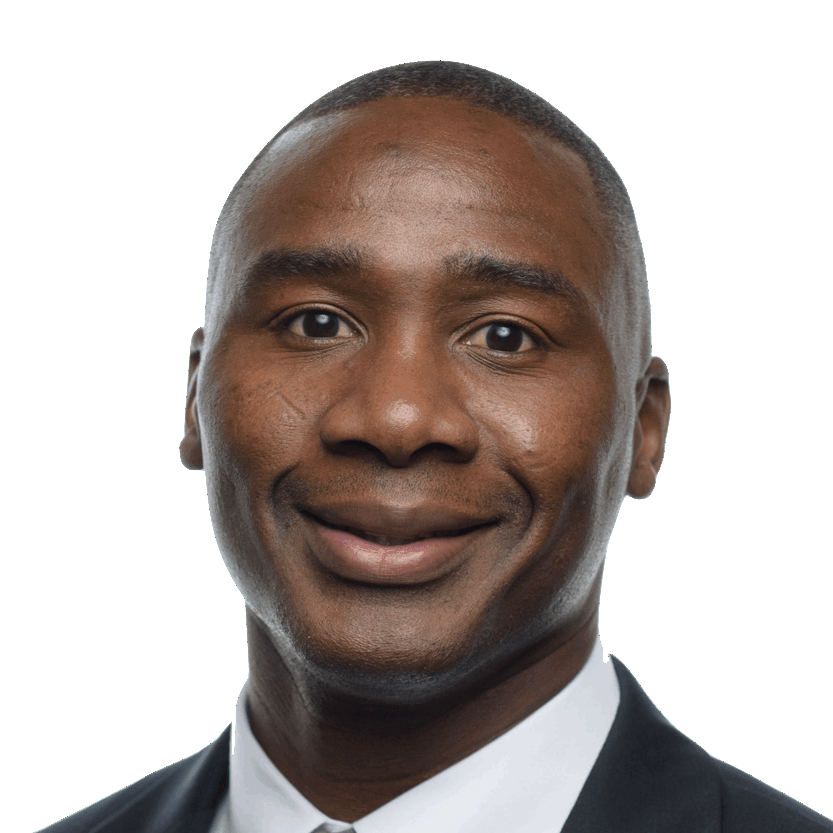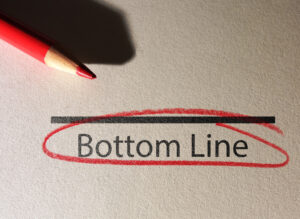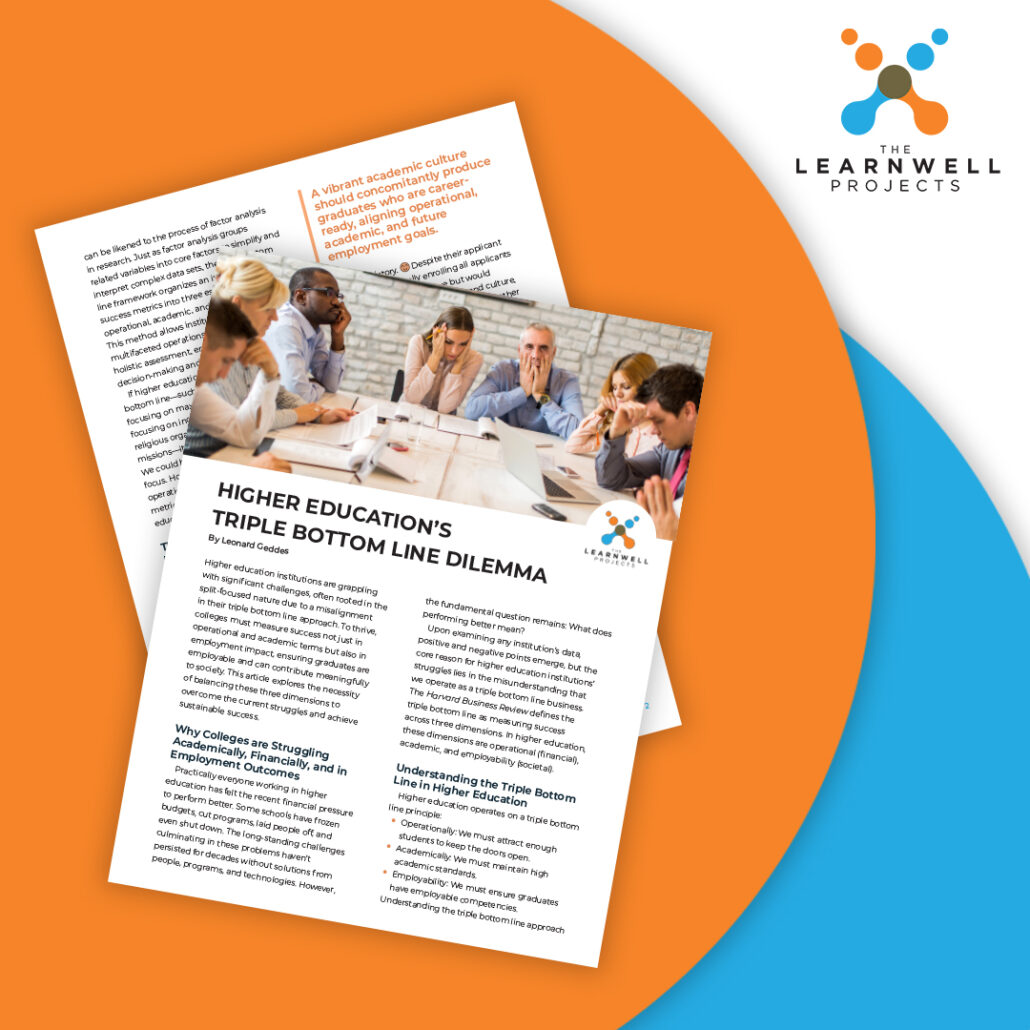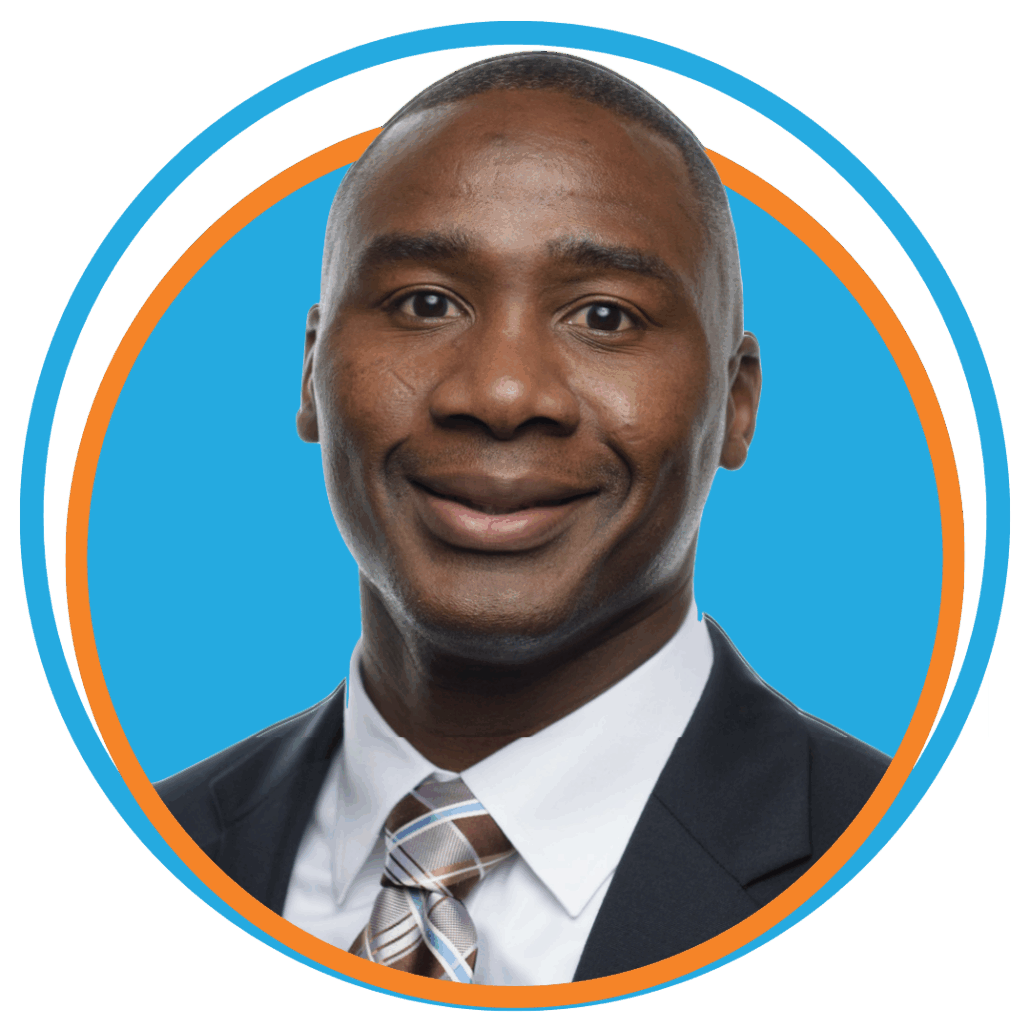Despite the entrenched perception, colleges and universities do not have enrollment problems.
Higher education institutions are grappling with significant challenges, often rooted in the split-focused nature due to a misalignment in their triple bottom line approach. To thrive, colleges must measure success in operational and academic terms and employment impact, ensuring graduates are employable and can contribute meaningfully to society. This article explores the necessity of balancing these three dimensions to overcome the current struggles and achieve sustainable success
Why Colleges are Struggling Academically, Financially, and in Employment Outcomes
Practically everyone working in higher education has felt the recent financial pressure to perform better. Some schools have frozen budgets, cut programs, laid people off, and even shut down. The long-standing challenges culminating in these problems haven’t persisted for decades without solutions from people, programs, and technologies. However, the fundamental question remains: What does performing better mean?
Upon examining any institution’s data, positive and negative points emerge, but the core reason for higher education institutions’ struggles lies in the misunderstanding that we operate as a triple bottom line business. The Harvard Business Review defines the triple bottom line as measuring success across three dimensions. In higher education, these dimensions are operational (financial), academic, and employability (societal).
Understanding the Triple Bottom Line in Higher Education
Higher education operates on a triple-bottom-line principle:
- Operationally: We must attract enough students to keep the doors open.
- Academically: We must maintain high academic standards.
- Employability: We must ensure graduates have employable competencies.
Understanding the triple bottom line approach can be likened to factor analysis in research. Just as factor analysis groups related variables into core factors to simplify and interpret complex data sets, the triple bottom line framework organizes an institution’s various success metrics into three essential dimensions: operational, academic, and career readiness. This method allows institutions to distill their multifaceted operations into a manageable and holistic assessment, enabling more strategic decision-making and targeted improvements.
If higher education were driven by a single bottom line, like the profit-maximizing focus of the private equity industry, the shareholder value emphasis of the corporate sector, or the spiritual mission of religious organizations, it would be much simpler to operate. We could harness the power of a singular focus. However, the complexity of balancing operational, academic, and employment metrics makes the management of higher education institutions uniquely challenging.
The Real Problem: Misaligned Metrics
Faculty members, who have invested greatly in their education and training, did not sign up to compromise academic quality for enrollment numbers.
Despite the entrenched perception, colleges and universities do not have enrollment problems. This view is counterintuitive given the tuition dependency of most institutions. To illustrate, consider Somewhere University, which hasn’t kept its enrollment high enough to cover operational costs. The administration, facing budget shortfalls, concludes, “We are not enrolling enough students to cover our costs.” But is this the real problem? Like most colleges, Somewhere University obtains more applicants than students they enroll. If the institution were singularly focused on enrollment as its only bottom-line metric, then it could solve its problem instantly by enrolling all applicants — and would win the award for the quickest and most impactful higher education meeting in history 😊. Despite their applicant overages, automatically enrolling all applicants could solve the financial issue but would compromise academic standards and culture, and it would undermine the institution’s other bottom line: ensuring students are employable.
Lowering enrollment standards erodes academic culture, which is foundational to the institution’s identity. Faculty members, who have invested greatly in their education and training, did not sign up to compromise academic quality for enrollment numbers. Furthermore, undergraduate education is a significant investment for families. In addition to the holistic values of higher education, students must graduate ready for either advanced education or a financially secure job.
One corporate executive I recently interviewed noted, “Work is learning. Much of what employees do involves learning quickly and operating with uncertainty.” Doesn’t this perspective align perfectly with many universities’ missions of developing lifelong learners? Therefore, a vibrant academic culture should concomitantly produce graduates who are career-ready, aligning operational, academic, and future employment goals.
Challenges of Conflicting Bottom Lines
Colleges and universities must decide if their bottom lines will conflict with each other or complement each other. Conflicting bottom lines can create significant challenges, such as compromising academic standards to meet enrollment targets or sacrificing employability outcomes for financial stability. Conversely, when these bottom lines complement each other, they contribute synergistically, enhancing the overall performance and reputation of the institution. For instance, high academic standards can lead to better employment outcomes, which in turn attract more students. Additionally, preparing newly enrolled students to thrive academically can increase retention (an operational indicator) in the short term and enhance their employability in the long run, establishing a positive feedback loop.
In a different scenario, let’s say Somewhere University decided to replace several of its faculty with adjuncts. This move may enhance its operational bottom line in the short term, but it will immediately diminish the academic culture bottom line and send the institution into decline over the long term. This is not to denigrate adjuncts; rather, it is based on the reality that adjuncts balance multiple adjunctships. Additionally, when institutions lose full-time faculty, the student body loses mentors and role models, and the campus culture undoubtedly changes.
Like many institutions that aren’t as strategic as they claim, Somewhere University felt it had to settle for a Faustian bargain — a red ocean strategy that left them battered and tattered, not realizing a blue ocean strategy was available.
Achieving Alignment and Success
The challenge lies in aligning the three bottom lines. Misalignment causes frustration and failure in higher education. Institutions can balance and achieve success in all three areas by adopting a structured process focused on building academic competence.
To address the triple bottom line dilemma, higher education institutions must redefine what performing better means, balancing operational, academic, and employment goals. This alignment is crucial for overcoming financial and employment challenges, ultimately leading to sustainable success.
Educators and administrators must engage in reflective practices to evaluate and align their institutions’ goals. By fostering an environment that prioritizes academic competence, operational efficiency, and employment impact, higher education can thrive.
Questions for Institutions to Ponder:
- Perspective Shift: Higher education boasts some of the best minds in history, which is why the issue isn’t brain power but a shift in perspective. What perspectives, narratives, or compromises is your institution harboring that prevent it from aligning its triple bottom-line metrics?
- Focus on Metrics: Which bottom line metric does your institution prioritize the most: operational, academic, or employment?
- Stakeholder Priorities: Which stakeholders (faculty, administrators, athletic coaches, etc.) focus on which specific metric, and how does this impact overall alignment?
- Alignment Strategies: How does your institution currently align its operational, academic, and employment bottom lines, and what strategies have been most effective?
- Potential Achievements: What potential achievements could your institution reach if its metrics were perfectly aligned?
By contemplating these questions and embracing a triple bottom-line approach, we can navigate the current struggles and emerge stronger and more resilient than ever.
Get Your Free PDF!
If you’re interested in this topic and want a PDF version of this article, leave a thoughtful contribution in the comments section below.




4 comments
Rashawn Green
Thank you for this article. Sometimes we forget what our focus should be and never revisit our mission. I believe many of us are misaligned and do not know it. This article reminds us that we need to look at our bottom line and work to align it by prioritizing what’s important and working with stakeholders to achieve it. Thank you again. Well done
Leonard Geddes
Rashawn, Thanks for your comment. Having worked with many higher education administrators, I have evidence that many of our leaders (and therefore others down the line) are misaligned. The misalignment is preventing us from capitalizing on what should be higher education’s glory years! With this being the knowledge and conceptual economy, higher ed should be thriving, yet we are perhaps less powerful than ever. Please help me share this message! I will send you the PDF version promptly.
Gabriel Angrand
Leonard, I mean this as a compliment: I think this is one of your best articles to-date. Although I’m aware of your decades-long career in Higher Ed, I hadn’t picked up on the organizational dynamics lens you may be using to inform your work and insights. It’s clear that this lens is being used in this piece.
I’m hoping many others choose to read your article, so I won’t summarize too much, but the way you call institutional priorities and assumptions into question aligns so well with the approach I expect we would take as institutions of learning and scholarship, to check if we’re looking at a scenario from multiple angles. And you even placed generalized case studies under the microscope (pun intended) to help your readers capture the framework you were sharing us.
If you haven’t already, please consider presenting this work at a conference, but I’m hoping you get keynote opportunities to flesh out the thoughts you’ve offered here. I’d love to talk more about the articles or books that were the foundation of the perspective you took! Thank you again for capturing the current landscape of Higher Ed in such an interesting and insightful way!
Leonard Geddes
Gabriel, Thanks for your contribution. I do take your comments as a compliment. This article reflects one of the fundamental challenges I’ve witnessed in higher education. People at different levels of the organization are often having different experiences within the same institution. My take is that those differences stem from them working toward different bottom-lines — faculty are more focused on the academic bottom line, admins the operational bottom line, families and society the employment bottom line. Highly effective leaders are able to synthesize all of those bottom lines in a way that increase all less effective ones resort to making trade offs.